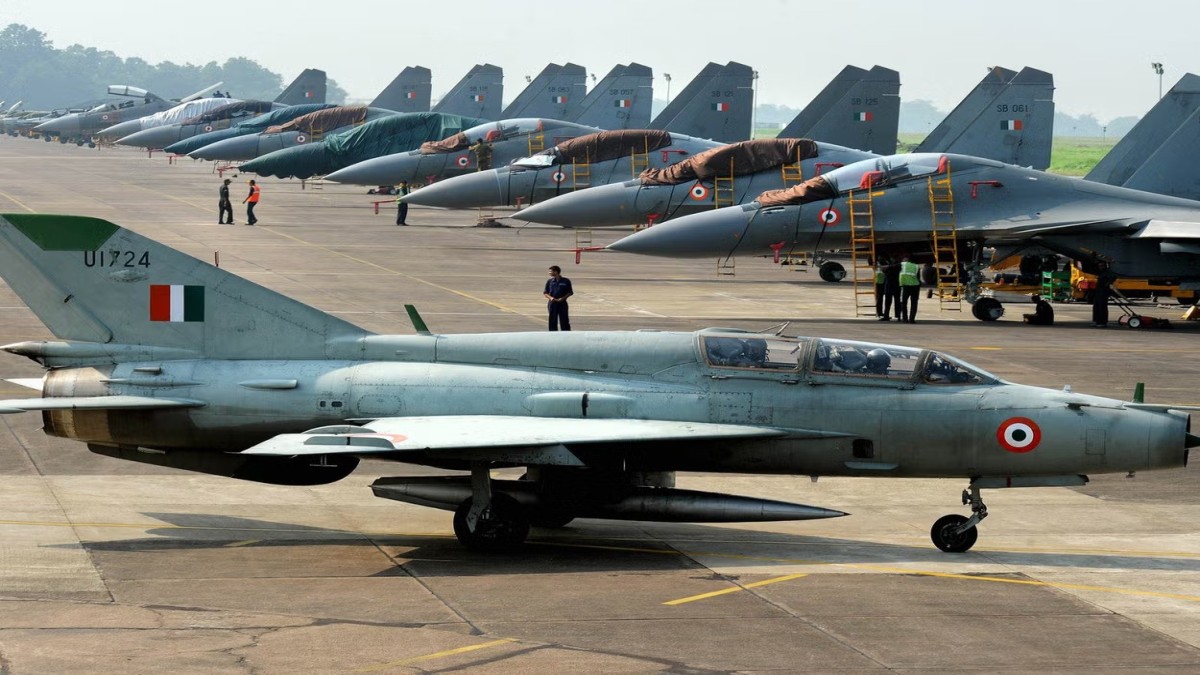Having earned the dubious nickname as “Flying Coffin” for the many spates of accidents that took a fatal toll on both men and machine, the Indian Air Force will finally bid adieu to the last batch of MiG-21 fighter jets—drawing curtains on a saga of military history that began 62 years ago.
A final combat before goodbye
Amid the pall of gloom that gripped the country over frequent crashes of MiG-21s during routine missions, the aircraft is at least going out with one last giant combat feat. That came on 27 February 2019, when Group Captain Abhinandan Varthaman shot down a Pakistani F-16 with his MiG-21 Bison during an aerial dogfight—an encounter triggered by an attempted violation of Indian airspace.
Supersonic legacy
Designed by the Mikoyan-Gurevich Design Bureau in the 1950s, the MiG-21 had its first flight in 1956 and entered service in the Soviet Union in 1959. It followed earlier MiG designs like the MiG-15 and MiG-17 but introduced supersonic performance and a delta wing, ideal for high-speed interception.
Featuring a single-engine design, delta-wing configuration, and basic avionics, the MiG-21 could exceed speeds of Mach 2. It was built for short-range engagements, typically armed with heat-seeking missiles, an internal cannon, and unguided bombs or rockets. The MiG-21 grew to symbolise not only Cold War-era Soviet engineering but also the evolution of affordable airpower that spread across the developing world.
Triumph over technology
In comparison to the F-16, these capabilities were practically ancient—metaphorically, a club-and-hammer against an AK-47 or a Beretta pistol. Yet, in that iconic 2019 dogfight, the MiG-21 triumphed over the American-made F-16, converting a so-called primitive machine into an instrument of humiliation for a more advanced opponent.
A record marred by tragedy
Despite its historic status, the MiG-21 also carries a heavy legacy of loss. According to a report in The Economic Times, the last of these aircraft belong to the 23 Squadron—also known as the Panthers—and will be decommissioned in a farewell ceremony at the Chandigarh airbase on September 19.
It wasn’t dubbed the Flying Coffin merely by clever wordsmithing. Too old for frontline duty and riddled with mechanical issues, the aircraft was involved in multiple fatal crashes. According to open-source data, around 200 pilots and at least 60 civilians have died in no fewer than 400 MiG-21 accidents—an alarming statistic that has affected both morale and public trust.
India’s airpower backbone for long
The MiG-21 entered Indian service in 1963, just a year after India’s military debacle against China. It’s notable that India didn’t use its air force during that war—perhaps a decision that, had it gone differently, might have rewritten the outcome from humiliation to hurrah.
From its induction, the MiG-21 quickly became the backbone of India’s airpower from the 1970s to the mid-2000s. During the 1971 Indo-Pak War, Indian MiG-21s proved decisive, shooting down Pakistani F-104 Starfighters. Since then, it has taken part in every major air operation—including Operation Sindoor in May this year.
A high attrition rate
Between 1966 and 1984, over 840 MiG-21s were built in India by Hindustan Aeronautics Limited (HAL), but more than half were lost in accidents. Whether due to mechanical failures or human error, the MiG-21’s story in India is one of both glory and deep grief.
Before production ended in the USSR in 1985, over 11,000 MiG-21s were built, some under license in countries like India. It became a defining product of Cold War-era military commerce. The Chinese licensed version, the Chengdu J-7, was in production until as late as 2013. Countries like North Korea still operate MiG-21s and J-7s, alongside even older MiG-19s—aircraft with origins in the Korean War era.
Combat service across continents
The MiG-21’s service history spans multiple continents. In Vietnam, it was flown by North Vietnamese forces who used its agility and speed at low altitudes to ambush American F-4 Phantoms. It was also widely used in the Arab-Israeli conflicts—particularly the 1967 Six-Day War and the 1973 Yom Kippur War—by Egypt, Syria, and Iraq. Though outmatched in training and tactics, the MiG-21 held its ground.
In Africa, the Balkans, Central America, and Afghanistan, the aircraft served various Soviet allies and client states. It became an airborne symbol of the USSR’s global reach and influence throughout the Cold War.
Impact Shorts
More ShortsIAF’s shrinking fleet
The IAF is supposed to maintain 42 fighter squadrons but currently operates only around 31. With the retirement of the last MiG-21 squadron—No. 23—the number is expected to drop to just 29. This is the lowest combat strength the IAF has seen since the 1960s. Even during the 1965 Indo-Pakistani War, the IAF had 32 active fighter squadrons.
Waiting for Tejas
Until the indigenous Light Combat Aircraft (LCA Mk1A) Tejas, developed by HAL, becomes fully operational, India faces the grim reality of reduced aerial firepower. The Tejas programme, despite its promise, has suffered decades of delays. Until it gains full combat readiness, India risks having air superiority on paper, not in the skies.


)

)
)
)
)
)
)
)
)



